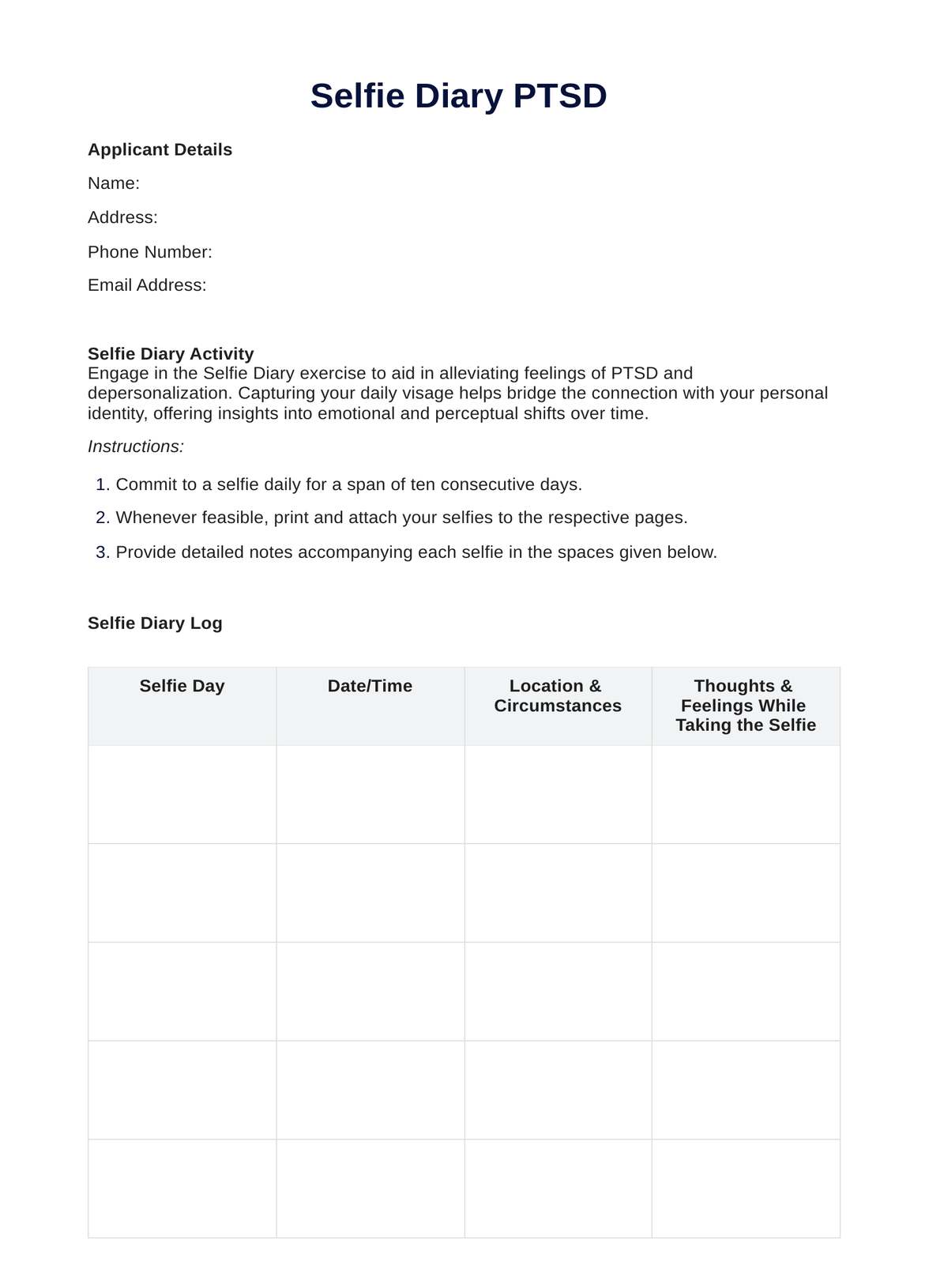It varies per individual but typically takes about 15-30 minutes daily.

Selfie Diary PTSD Worksheet
Embrace self-reflection and manage PTSD effectively with the Selfie Diary PTSD Worksheet. A tool designed to help identify triggers and track progress.
Use Template
Selfie Diary PTSD Worksheet Template
Commonly asked questions
A Selfie Diary PTSD Worksheet aids in tracking symptoms, identifying triggers, and planning coping mechanisms.
Our Selfie Diary PTSD Worksheet can be used daily in your self-care routine or during therapy sessions.
EHR and practice management software
Get started for free
*No credit card required
Free
$0/usd
Unlimited clients
Telehealth
1GB of storage
Client portal text
Automated billing and online payments











